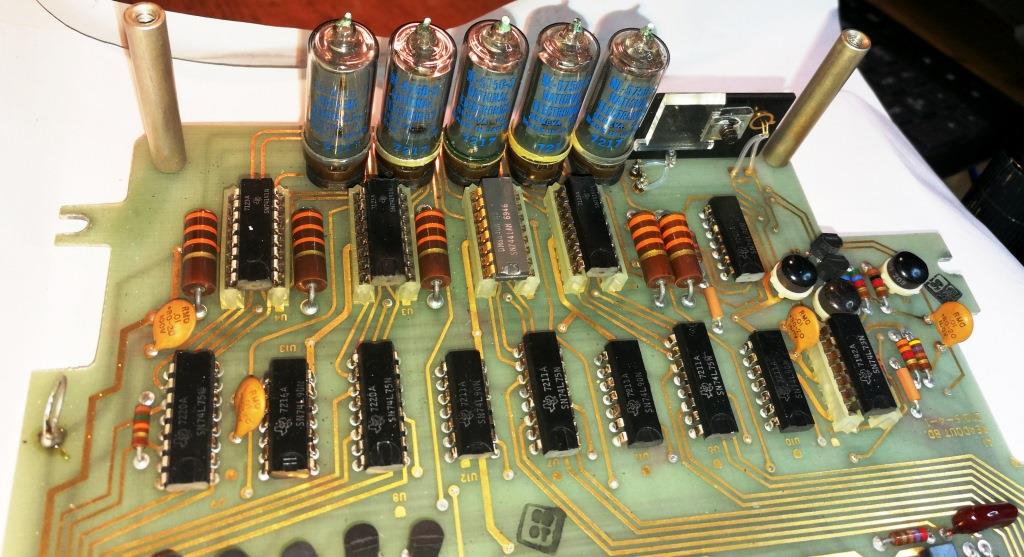I recently managed to get my 1970's Systron Donner 7004 full four digit multimeter functionally working/calibrated.
I had been waiting patiently for a decade to see if two National Electronics NL-5750-S nixie tubes would land in my lap for nix (pun intended) as 2 of the display tubes were not displaying. With some renewed incentive I opened up the dormant unit again to see if I could characterise the failed nixie tubes, and soon realised that both 'failed' tubes still worked when placed in the far left display position for '0,1,'dot' display. I then realised that those two displays weren't working because the anode voltage was being suppressed sufficiently for each 'bad' tube not to strike.
With a spare 16-pin header socket and some soldered on IC pins I was able to raise a SN74141 bdc to decimal driver IC above its normal pcb socket and just connect selected nixie tube cathode pins through to the driver IC. A bit of trial and error showed that the 'best' of the two bad tubes still allowed all numerals to be displayed except for 7 and 9, so that tube was used for the most significant digit next to the 0-1-dot display, giving me effectively a working multimeter again - and for nix outlay.
The operating manual (
https://dalmura.com.au/static/Systron-Donner%207004%20Multimeter.pdf) technical description and calibration procedure were next to useless, so it took a few loops to work through a calibration scheme. The main concern was the minimum zeroed display for ACV, which required the 3 main power supply electrolytics to be replaced. Without the guard plate covering the main analog pcb I was able to zero the last digit (0.01mV) down to 3-4 being displayed for the x0.1 ACV range, but putting the guard plate back on then raised the min display to about 47 (which was still just within spec). I don't have the calibration facilities to accurately set the absolute FS levels, but they were able to be set against my best meter, so I'm pleased with the outcome.
